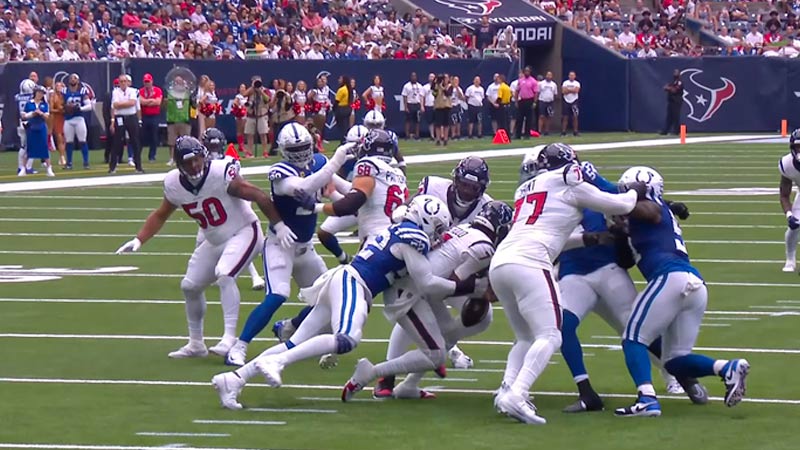In the realm of football strategy, the 5-3 Defense stands as a historic and adaptable approach to thwarting opposing offenses.
Born in the 1930s to counter evolving passing attacks, this defensive formation has witnessed transformations and adaptations over the decades.
From its roots in surprising the Chicago Bears to its prevalence in division championships, the 5-3 Defense has left an indelible mark on the gridiron.
This blog post delves into the principles, player roles, and strategic nuances of the 5-3 Defense, exploring how it has weathered the test of time and continues to influence defensive tactics in modern football.
What Is Football 5-3 Defense?
The Football 5-3 Defense emerged in the 1930s to counter evolving passing attacks, influenced by rule changes and the T formation’s innovations. Coined by Steve Owen, the New York Giants’ coach, in 1933, it contributed to their division championships.
By the late 1930s, it became a favored pass defense in response to the T formation’s effectiveness. The Cleveland Browns, Pittsburgh Steelers, and San Francisco 49ers were notable adopters.
However, by the late 1950s, the 5-3 yielded to the 5-2 Eagle or 4-3 defenses in the NFL. In modern college football, where passing games are less powerful, variations have arisen featuring a hybrid rover back.
This player, part linebacker and part pass defender, adapts to the shifting demands of the game, as seen in formations like the inverted rotation introduced around 1958.
Principles of Football 5-3 Defense
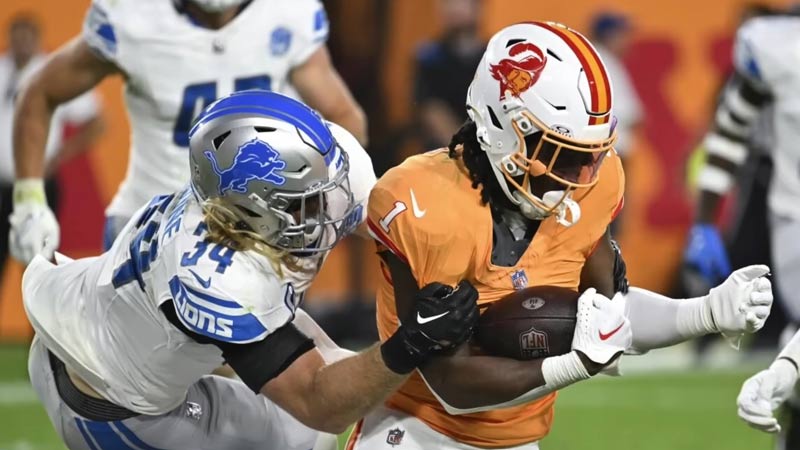
The Football 5-3 Defense principles involve strategic positioning, player roles, and adaptability to counter both running and passing plays. Here are key principles:
Five-Man Defensive Line
The foundation of the 5-3 Defense is a five-man defensive line. This setup aims to pressure the offensive line, disrupt running plays, and rush the quarterback in passing situations.
Three Linebackers
The 5-3 features three linebackers positioned behind the defensive line. They play a crucial role in stopping runs, covering short and intermediate passes, and putting pressure on the quarterback when necessary.
Versatility of Linebackers
Linebackers in the 5-3 Defense must be versatile players capable of stopping runs between the tackles, covering tight ends and running backs in pass coverage, and occasionally rushing the quarterback. Adaptability is key.
Defensive Backfield Shifts
Depending on the offensive formation, the defensive backfield may shift to adjust coverage. Using a rover or monster back provides flexibility to handle various offensive threats.
Pass Defense Emphasis
Originally designed to respond to the increasing effectiveness of passing attacks, the 5-3 Defense emphasizes pass coverage. The defensive backs must be skilled in man-to-man and zone coverage to defend against aerial threats.
Recognition and Reaction
Defenders must quickly recognize whether the play is a run or pass and react accordingly. This requires high football intelligence, film study, and on-field awareness.
The Football 5-3 Defense is built on a balance between pass defense and support, emphasizing adaptability and effective communication among players.
Versatile linebackers and a strategic defensive line play key roles in the success of this defensive scheme.
Advantages of the 5-3 Defense
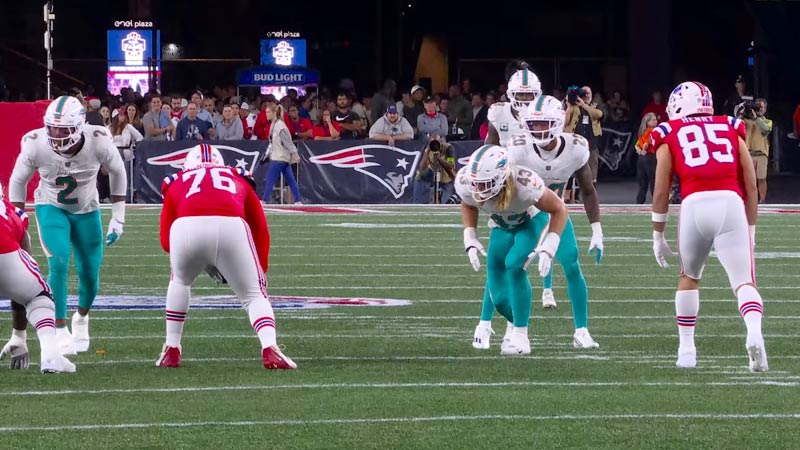
The 5-3 Defense in football offers several advantages, making it a strategic choice for teams in certain situations. Here are some key advantages:
Pass Defense Focus
The 5-3 Defense is designed to excel in defending against passing plays.
With five defensive linemen and a pass-oriented setup, it provides a strong front against quarterbacks and receivers, making it challenging for the offense to gain significant yardage through the air.
Quarterback Pressure
The alignment of five defensive linemen enhances the team’s ability to generate pressure on the quarterback. This pressure can lead to sacks, disrupted passes, and overall disruption of the opposing team’s passing game.
Versatility in Coverage
Including three linebackers and defensive backfield shifts allows for versatile pass coverage.
The defense can adapt to various offensive formations and adjust coverage based on the situation, providing flexibility against different passing threats.
Adaptability to Offensive Shifts
The 5-3 Defense is designed to be adaptable to different offensive formations.
This flexibility allows the defense to respond effectively to the opponent’s strategy changes, making it a robust choice against varied offensive approaches.
Strong Run Support
While primarily focused on pass defense, the 5-3 Defense doesn’t neglect the run game.
The alignment of three linebackers and a solid defensive line enables effective run support, preventing the offense from gaining substantial yardage on running plays.
Disruption of Blocking Schemes
The five-man defensive line can disrupt offensive blocking schemes, creating gaps and vulnerabilities for the defenders to exploit.
This disruption can lead to tackles for loss, forcing the offense into unfavorable down-and-distance situations.
Limitation of Running Lanes
The defensive alignment is designed to limit running lanes for the opposing team. By controlling gaps and maintaining a strong presence along the line of scrimmage, the 5-3 Defense aims to restrict the effectiveness of running backs.
While the 5-3 Defense has its advantages, it’s important to note that no defensive scheme is universally superior, and its effectiveness depends on factors such as the opponent’s strengths, offensive strategies, and the personnel on the defensive roster.
Player Roles and Responsibilities in 5-3 Defense
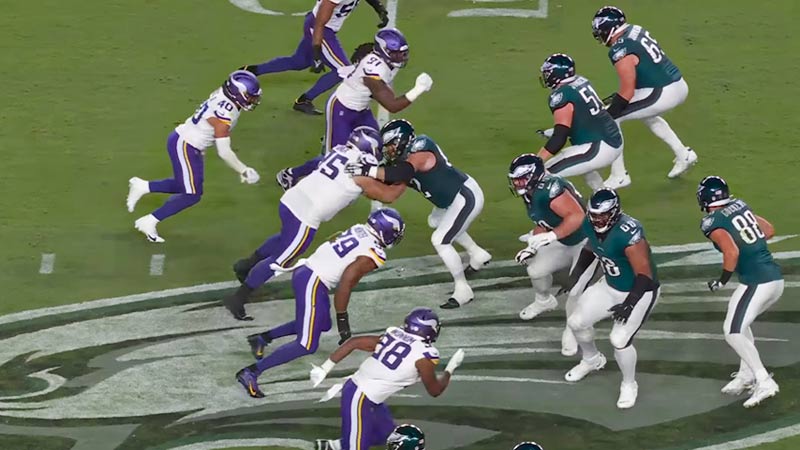
In the 5-3 Defense, each player has specific roles and responsibilities to fulfill for the overall effectiveness of the scheme. Here’s an overview of the key positions and their duties:
Defensive Linemen (5 players)
- Nose Tackle (NT): Lines up directly over the center. Responsible for clogging the middle, disrupting the center-quarterback exchange, and creating pressure up the middle in both run and pass situations.
- Defensive Tackles (DT): Aligned on either side of the nose tackle. Their primary responsibilities include occupying blockers, maintaining gap integrity, and contributing to both run-and-pass defense.
- Defensive Ends (DE): Positioned on the outside edges of the defensive line. DEs are tasked with setting the edge against outside runs, applying pressure to the quarterback, and containing the play within the tackles.
Linebackers (3 players)
- Middle Linebacker (MLB): Plays a crucial role in running support, filling gaps, and making tackles between the tackles. Additionally, I am responsible for pass coverage, especially in the middle of the field.
- Inside Linebackers (ILB): Positioned on either side of the middle linebacker, ILBs contribute to run defense and pass coverage and may blitz the quarterback. They need to be versatile players capable of making tackles and covering ground.
- Outside Linebackers (OLB): Positioned on the outer edges of the linebacker alignment. OLBs are responsible for setting the edge against outside runs, passing coverage on the perimeter, and providing additional pass-rushing capabilities.
Defensive Backs (3 players)
- Cornerbacks (CB): Positioned on the outside edges of the defensive formation. Cornerbacks primarily cover wide receivers, defend against pass plays, and provide run support when necessary.
- Safeties (S): Typically, there are two safeties – a strong safety (SS) and a free safety (FS).
- Strong Safety (SS): Plays closer to the line of scrimmage, providing additional run support and contributing to pass coverage. It may also blitz in certain situations.
- Free Safety (FS): Plays deeper in coverage, is responsible for defending against deep passes, provides support over the top, and helps cover the middle of the field.
Rover/Monster Back
A rover or monster back may be used as a hybrid player in modern adaptations. This player combines the skills of a safety and linebacker and is expected to support against the run, cover tight ends or slot receivers, and occasionally blitz.
Defensive Coordinator
Oversees the overall defensive strategy, makes play calls, and adjusts the defense based on the opponent’s offensive formations and tendencies.
The defensive coordinator is responsible for ensuring that each player understands their role and executes it effectively.
Each 5-3 Defense player must cooperate to maintain gap discipline, provide run support, and defend against pass plays.
Flexibility and adaptability are crucial, as the defense needs to adjust based on the offensive formations and plays encountered during the game.
Common Adjustments and Variations in 5-3 Defense
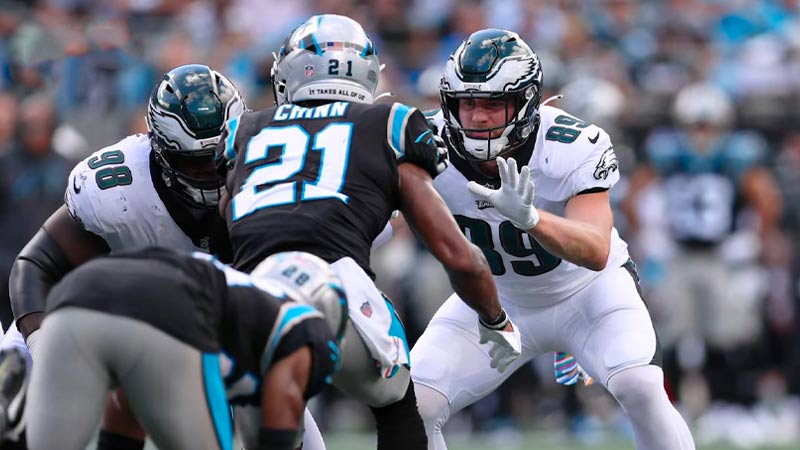
Coaches often make adjustments and variations to the 5-3 Defense based on their team’s specific strengths and weaknesses and the strategies employed by the opposing offense.
Here are common adjustments and variations:
Coverages
- Man-to-Man Coverage: While the 5-3 is often associated with zone coverage, coaches may incorporate man-to-man coverage in certain situations. This can be effective for locking down specific receivers or tight ends.
- Zone Coverage: The traditional 5-3 Defense relies heavily on zone coverage. Coaches may adjust the depth and responsibilities of zones based on the offensive scheme they are facing.
Blitz Packages
- Linebacker Blitzes: Coaches may design specific blitz packages for linebackers to disrupt the quarterback or stop running plays in the backfield.
- Safety Blitzes: Safeties, particularly the strong safety, may be utilized in blitz packages to create additional pressure on the quarterback.
Front Variations
- Even Front: Instead of a 5-3 alignment, coaches might use an even front (4-3) or other variations to create different looks for the offense. This can provide additional flexibility in defending against both the run and pass.
- Gap Shooting: Defensive linemen may be instructed to shoot specific gaps to disrupt blocking schemes and penetrate the offensive line.
Personnel Adjustments
- Nickel and Dime Packages: In passing situations, coaches may substitute defensive backs for linebackers to improve pass coverage. This is common in third-and-long scenarios.
- Big Nickel: To address strong passing attacks while maintaining some run support, coaches might use a “big nickel” package, which includes safety with better run-stopping abilities.
Rover or Monster Back Usage
Coaches may deploy the rover or monster back in various ways. They might line up in the box for run support or drop into coverage to defend against passes. The versatility of this player adds unpredictability to the defense.
Shifts and Motion Recognition
Defensive players may shift or adjust their alignment based on offensive shifts or pre-snap motion. This ensures that the defense is well-positioned to counter the specific play.
Run Support Emphasis
Coaches may adjust the responsibilities of linebackers and safeties to provide additional run support based on the tendencies of the opposing offense.
Adaptations to Spread Formations
Against spread formations, coaches might adjust the alignment of defensive backs and linebackers to better defend against quick passes and wide receiver screens.
Stunting and Twisting
Defensive linemen may execute stunts or twists to confuse offensive linemen, create mismatches, and generate additional pressure on the quarterback.
Game Situation Adjustments
Coaches may make real-time adjustments based on the game situation, such as the score, time remaining, and down-and-distance scenarios. This includes decisions on whether to be more aggressive or conservative in certain situations.
The effectiveness of the 5-3 Defense often lies in the ability of coaches to make intelligent adjustments based on the evolving dynamics of the game and the specific challenges posed by the opposing offense.
FAQs
What is the primary objective of the Football 5-3 Defense?
The primary objective of the 5-3 Defense is to provide a strong front against passing plays while maintaining effective run support.
With a five-man defensive line and three linebackers, it aims to disrupt the quarterback, limit passing options, and control the line of scrimmage against the run.
How does the 5-3 Defense adapt to different offensive formations?
The 5-3 Defense is designed for adaptability. It can shift defensive backfield coverages, use versatile linebackers, and adjust to counter varied offensive formations.
This flexibility allows the defense to respond effectively to the opponent’s strategies.
What role does the rover or monster back play in the 5-3 Defense?
The rover or monster back is a hybrid player, blending linebacker and safety skills. This player offers versatility, providing box-run support and covering receivers or tight ends.
Their adaptability adds unpredictability to the defense against both run and pass plays.
How does the 5-3 Defense handle quarterback pressure?
The 5-3 Defense enhances quarterback pressure by deploying a five-man defensive line. Defensive ends set the edge, while interior linemen disrupt the pocket.
Linebackers may also be used in blitz packages. This collective effort aims to sack the quarterback, force quick decisions, and disrupt passing plays.
Is the 5-3 Defense still relevant in modern football?
While the 5-3 Defense has evolved, its principles remain relevant. Modern adaptations include coverage variations, personnel adjustments, and responses to spread formations.
Coaches may tweak the system to address contemporary offensive strategies, making the 5-3 a versatile and adaptable defensive scheme.
Wrapping Up
The Football 5-3 Defense remains a dynamic force in the ever-evolving landscape of football strategy.
From its inception as a response to potent passing attacks to its adaptation to modern offensive schemes, this defensive approach showcases resilience and versatility.
As coaches continue to fine-tune their game plans, the 5-3 Defense endures as a strategic choice, blending historical foundations with contemporary adjustments.
Whether pressuring quarterbacks, stifling running lanes, or adapting to various offensive formations, the 5-3 Defense is a testament to the enduring legacy of strategic ingenuity on the gridiron.
As football evolves, the 5-3 Defense stands tall, embodying the balance between tradition and innovation in pursuing defensive excellence.

